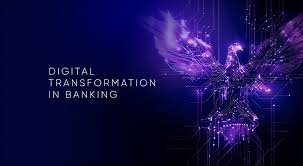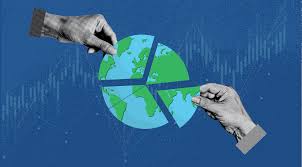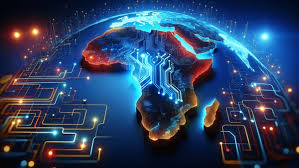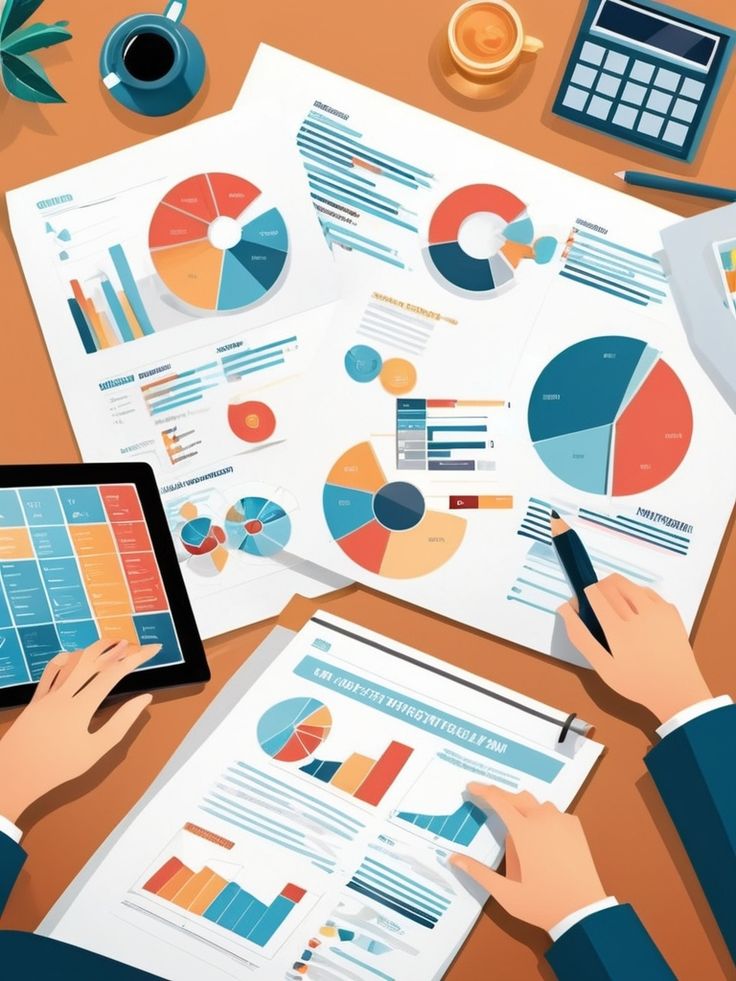The Remaking of Banking: Navigating Digital Disruption and Economic Shifts

The global banking system is undergoing its most profound transformation in decades, driven by a powerful confluence of technological disruption, evolving customer expectations, and a dynamic economic landscape.
Traditional banks are no longer just reacting to these changes; they are actively reimagining their core business models, services, and operations.
This pivotal moment is defined by a deep commitment to digitalization, a growing embrace of sustainable practices, and strategic collaborations with fintechs.
The result is a fundamental shift toward a more agile, personalized, and interconnected financial future.
Digital Transformation: Efficiency vs. Legacy Systems
Digital transformation and automation are fundamentally reshaping traditional banking processes, from the front-facing customer experience to back-office operations.
SOURCE: Google
By automating repetitive tasks like customer onboarding, loan applications, and regulatory reporting, banks are achieving significant efficiency gains and reducing operational costs.
According to a study by McKinsey & Company, digital automation in banking can lead to a 20-30% reduction in costs, allowing banks to reallocate resources to more strategic, customer-facing roles.
Automated chatbots and self-service portals provide customers with 24/7 access to services, reducing wait times and improving overall satisfaction.
SOURCE: Google
However, this transformation is not without its challenges. The most significant obstacle for many established banks is their reliance on complex, outdated legacy systems.
These systems, often built decades ago, are difficult and expensive to integrate with modern digital platforms and APIs.
Upgrading them requires a significant investment of time and capital. Banks must also navigate the risks associated with data security and privacy, as cyber threats become more sophisticated.
The process requires a careful balance between leveraging new technology and ensuring that sensitive customer data remains secure, a challenge that is at the forefront of every digital transformation strategy.
The Growing Impact of AI and Machine Learning
Artificial Intelligence (AI) and Machine Learning (ML) are becoming indispensable tools in global banking, particularly for their ability to process and analyze vast amounts of data at unprecedented speeds.
SOURCE: Google
This technology is revolutionizing fraud detection, where AI algorithms can analyze transaction patterns in real time to identify and flag suspicious activities with greater accuracy than traditional rule-based systems.
American Express, for example, has reported a significant improvement in fraud detection rates by using advanced AI models. By learning from historical data, these systems can adapt to new fraud schemes as they emerge, offering a crucial layer of security.
AI and ML are also enhancing the customer experience through personalization.
By analyzing customer data, banks can offer tailored product recommendations, from investment opportunities to loan options, that align with an individual's financial goals and spending habits.
Furthermore, AI-powered credit scoring is moving beyond traditional metrics to include alternative data sources, providing a more comprehensive and accurate risk assessment.
This is expanding access to credit for previously underserved populations, while also improving the bank's ability to manage risk.
Embedded Finance and Banking-as-a-Service (BaaS)
Concepts like embedded finance and Banking-as-a-Service (BaaS) are fundamentally reshaping the competitive landscape of the financial services industry. Embedded finance refers to the seamless integration of financial services into non-financial products and experiences.
SOURCE: Google
A prime example is the "buy now, pay later" (BNPL) option offered directly at an e-commerce checkout, eliminating the need for a customer to switch to a separate banking app.
This approach makes financial services more contextual, convenient, and invisible to the end-user.
BaaS is the technological engine that powers this revolution. It allows banks to offer their core banking capabilities—such as payments, lending, and account opening—as modular, API-driven components that third-party companies can embed into their own platforms.
This creates new revenue streams for banks and allows non-financial companies, from retailers to software providers, to offer financial products without a banking license. This symbiotic relationship fosters a new era of partnerships, blurring the lines between traditional finance and other sectors.
The Rise of Sustainable Finance and ESG
Sustainable finance and ESG (Environmental, Social, and Governance) considerations are no longer niche topics; they are now central to the strategies of global banks.
SOURCE: Google
Driven by investor demand, regulatory pressures, and a commitment to corporate responsibility, banks are actively channeling capital toward environmentally friendly and socially responsible projects.
The issuance of green bonds has become a key mechanism for this, with proceeds being used to fund initiatives in renewable energy, sustainable infrastructure, and energy efficiency.
Banks are also integrating ESG factors into their lending and investment decisions. This involves assessing the environmental and social impact of the companies they finance, a practice that helps mitigate long-term risk and aligns with global sustainability goals.
The Principles for Responsible Banking (UNEPFI) provide a framework for banks to integrate sustainability into their core operations.
This commitment to ESG is not just about compliance; it is seen as a way to create new business opportunities, enhance brand reputation, and build a more resilient financial system.
Navigating Economic Challenges and Building Resilience
Global banks are navigating a complex and dynamic economic landscape marked by significant challenges and opportunities. Interest rate fluctuations remain a primary concern. While rising rates can increase net interest income, they also heighten the risk of loan defaults.
Banks must carefully manage their portfolios to balance profitability with risk exposure. Geopolitical risks, such as conflicts and trade tensions, also pose a significant threat, disrupting global supply chains and creating market volatility.
A report from EY's Global Banking Outlook 2025 notes that these uncertainties are likely to persist, and banks must build resilience through proactive risk management and scenario planning..
Despite these challenges, opportunities abound. Emerging market growth, particularly in Asia and Africa, presents new avenues for expansion and investment. Banks are also leveraging technology to build more resilient business models.
By diversifying their services, optimizing their operations, and focusing on digital delivery, they are better equipped to withstand economic shocks and adapt to shifting market conditions. This focus on agility is a key lesson from recent global events.
Evolving Regulatory Environments
Regulatory environments worldwide are evolving rapidly to keep pace with technological advancements and to ensure the stability and security of the financial system.
Authorities are focused on striking a balance between fostering innovation and protecting consumers.
The implementation of frameworks like Basel IIIcontinues to shape global banking, with a focus on strengthening capital requirements, liquidity, and risk management to prevent future financial crises.
Regulators are also developing new frameworks specifically for fintechs and digital assets. Concepts like regulatory sandboxes are being adopted globally to allow startups to test new products in a controlled environment, promoting innovation while maintaining oversight.
The regulation of digital currencies and other emerging technologies is a growing priority, as governments and central banks work to ensure consumer protection and financial integrity in a decentralized world.
This evolving regulatory landscape is a critical component of the new banking era, providing the essential guardrails for a rapidly changing industry.
More Articles from this Publisher
Cracks in the Foundation: Examining the Vulnerabilities of the Global Banking System

Beyond digital transformation, the global banking system faces inherent fragilities. This article explores the economic,...
The Remaking of Banking: Navigating Digital Disruption and Economic Shifts

The global banking system is at a crossroads. Explore how digital transformation, AI, sustainable finance, and evolving ...
How Ancient African Kingdoms Shaped a Continent's Enduring Legacy

Go beyond colonial narratives. Explore the sophisticated governance, advanced trade networks, and remarkable innovations...
How African Tech is Building Solutions for the Continent and Beyond

Far from simply adopting global trends, African tech innovators are building ingenious, localized solutions to the conti...
Funding a Green Future: Africa's Ascent in Sustainable Finance

Africa is leveraging sustainable finance instruments like green bonds and blended finance to attract crucial investment,...
The Business Opportunities Reshaping a Continent

Africa is rapidly emerging as a dynamic global business frontier. Explore how a youthful population, technological leapf...
You may also like...
The Rise of K-pop and Anime in Africa: A Socio-Economic Bridge To the East

K-pop and anime are reshaping Africa’s cultural landscape, sparking new youth trends and creative expression. Beyond ent...
How the Bunyoro-Kitara Tribe Mastered Brain Surgery and C-Sections Centuries Before Modern Medicine

Long before hospitals and antibiotics, Uganda’s Bunyoro-Kitara tribe performed complex brain surgeries and life-saving C...
How the Bunyoro-Kitara Tribe Mastered Brain Surgery and C-Sections Centuries Before Modern Medicine

Long before hospitals and antibiotics, Uganda’s Bunyoro-Kitara tribe performed complex brain surgeries and life-saving C...
Cracks in the Foundation: Examining the Vulnerabilities of the Global Banking System

Beyond digital transformation, the global banking system faces inherent fragilities. This article explores the economic,...
The Remaking of Banking: Navigating Digital Disruption and Economic Shifts

The global banking system is at a crossroads. Explore how digital transformation, AI, sustainable finance, and evolving ...
African Women at the Negotiation Table: The Forgotten Female Diplomats Who Shaped Post-Independence

A historical exploration of African women diplomats who shaped post-independence politics, from Angie Elizabeth Brooks t...
Local Innovations Driving Clean Water Access in Africa
(29).jpeg)
Practical and innovative water solutions are transforming African cities. From desalination to wastewater recycling, dis...
When the Sun Keeps Its Promise: Africa’s 20 GW Solar Achievement

Africa has reached a historic milestone in its solar journey, crossing 20 gigawatts of installed solar energy capacity. ...